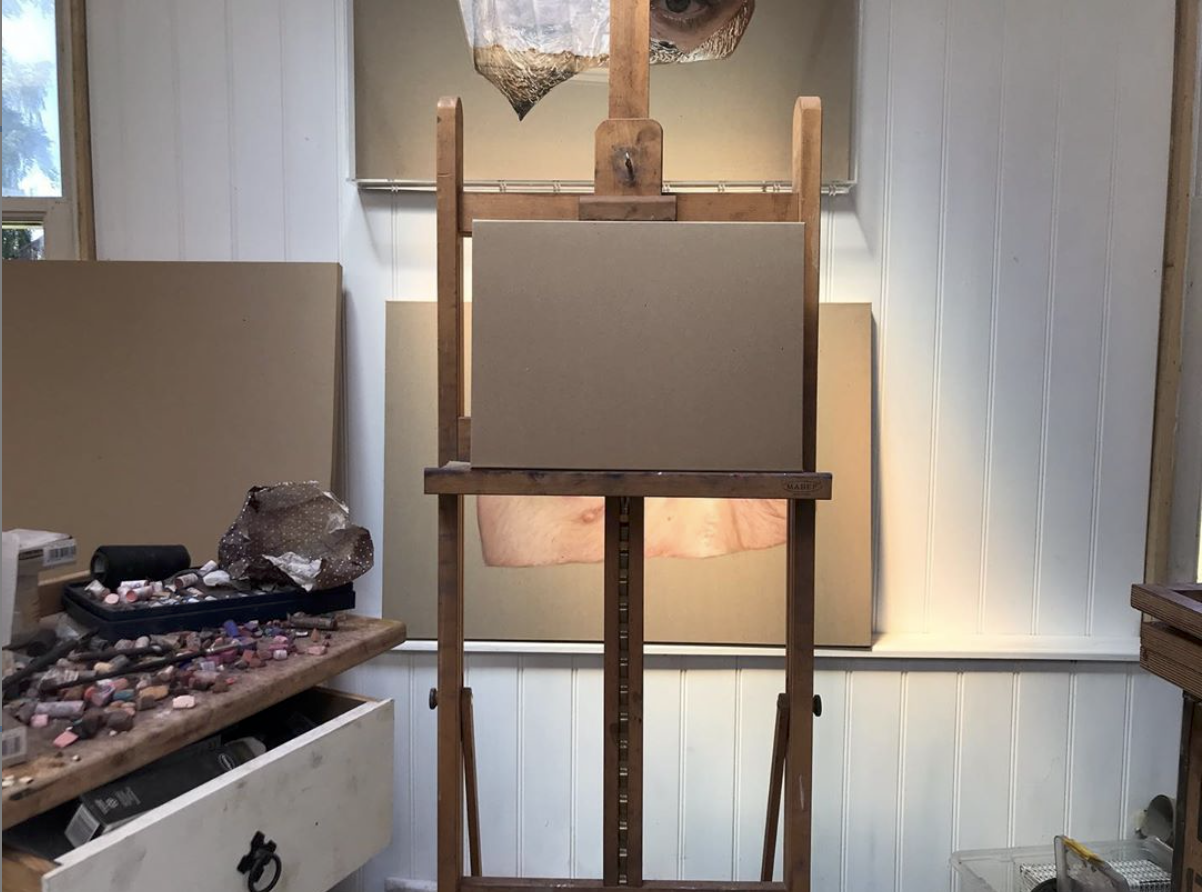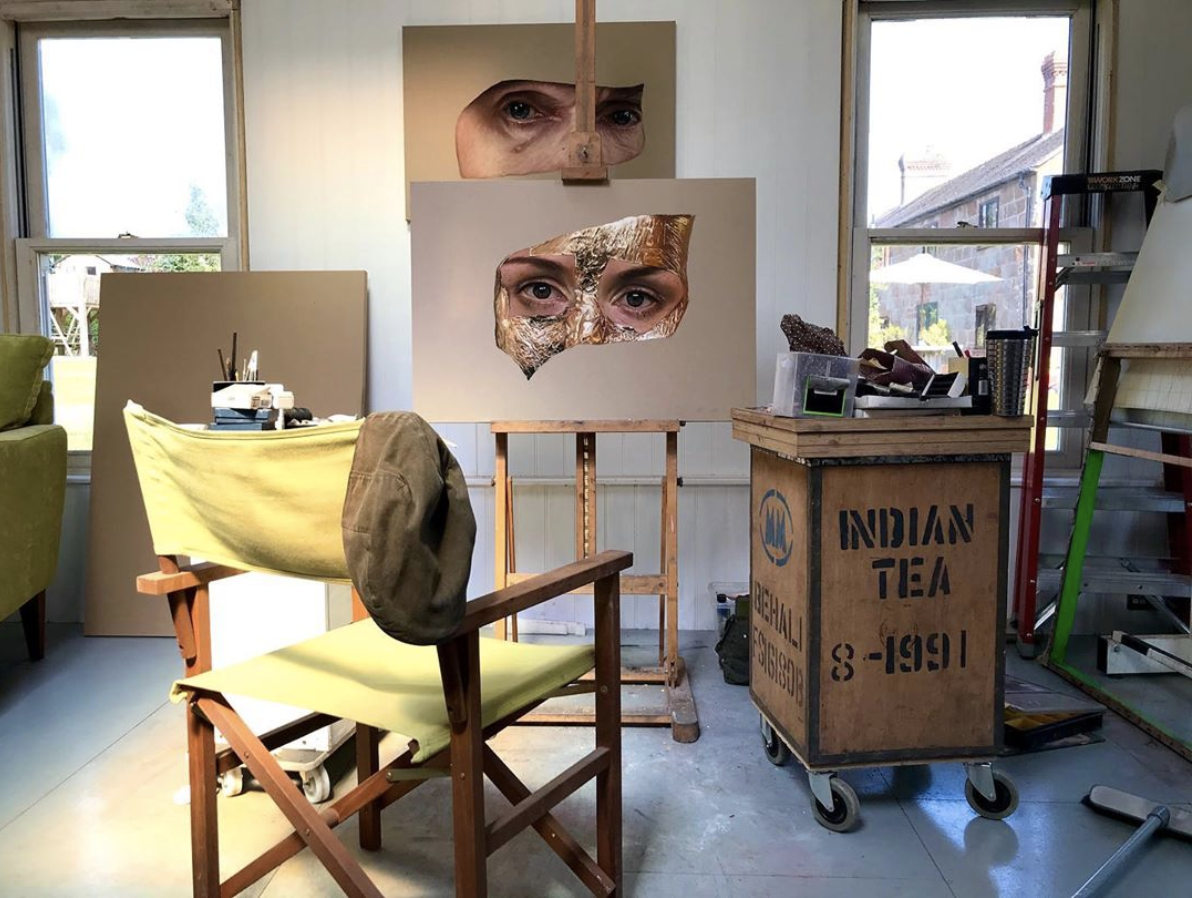1. Describe your experience of professional training and how does it continue to inform your process and productivity?
Although I have been through art school the physical nature and the skills of my practice are very much self-taught, drawing is something I have always done and it hadn’t ever particularly occurred to me that I would do anything else. I received commissions of sorts from as far back as I can remember (Although I wouldn’t like to re-encounter some of the early ones!). However what Art School did was to nurture a notion of self-interrogation - the course that I took was very much self-directed and so transferring my practice and furthering my research as a practising artist was pretty seamless. It will no doubt forever continue to inform the questioning that I have for my work.
2. What is your average day like both in the studio and out and about?
When I am at the beginning, middle or end of a piece of work my days a spent wholly in the studio until it is finished. It will involve deciphering/interpreting a photographic image or a mirrored reflection and transposing the information into pastel gestures and drinking coffee! However when I am in a researching phase, things become a little more sporadic and spontaneous. New works are always compiled mentally and probably somewhat loosely however I have a definite idea of what I need the work to achieve and look like, the issue then is spending days and sometimes months on the lookout for suitable reference material. Whether that is scouring model’s profiles or getting out physically searching for the embodiment of the image that I have in my head. (it certainly isn’t unheard of for me to stop folk in the street and ask them to sit for photographs) For this reason I can have a number of works ‘on the go’ in my head until I find an adequate reference, it is rare that I have the idea with an immediate resource to hand. That is not to say that it can’t also work in reverse, a commission for example, means that I more often than not have the resource material to hand and then having to tailor it to suit a certain outcome. Both instances result in a photo shoot which then involves trawling through hundreds of images and selecting a handful which I can then compose through digital editing into an image as close to my mental vision as possible.
3. How does having a family inform your work? Can you speak a little about your piece '#motherandchild'?
Having a family very much focuses my attention and I think it has altered my thinking; it has certainly given me a more profound outlook on life and a deepened questioning of it and probably due to seeing it from multiple points of view and perspectives. Seeing as art is derived from observation of life and the world around us it naturally proceeds that the more cues I am surrounded by the more I have to comment on throughout my work. This is certainly the case with “#motherandchild” - becoming immersed in a world* (*parenting) that is completely new and reactive necessitated a consideration of how others react to a similar position. This led me to the inquiry surrounding parenting/motherhood and the behemoth that is social media. I wanted to draw comparisons between historic visions of motherliness and a more contemporary version seeing as it is difficult to escape from an archetypal notion of “how it ought to be done” and how one naturally adapts to it. But I also cannot help but see that technology, most significantly mobiles phones, have impacted so significantly on our lives and have become so much of a distraction that even the interaction between parent and child is impacted. On a more personal level, (even though I don’t put any of my drawings up at home) it is always interesting to document those close to you, in this case my wife and my newly born second daughter. I think there probably may well be some greater conveyance of likeness or personality simply through the closeness I have to them in life rather than just as a sitter.
4. Can you share a little about your current work in progress?
My current work centres largely on DIY beauty therapies. There are so many weird and wonderful self-help technologies circulating on the internet, most of which have little or no scientific grounding or evidence of results, yet it doesn’t deter individuals from experimenting with them in the pursuit of ‘perfection’. This particular piece, not to give too much away, involves artificial lighting from lights in the device designed to alter ones appearance – Since I dabbled with neon lighting in the work “Divine” I have gained an interest in the effects of artificial light.
5. Are there any particular people, places or things that serve as points of inspiration for you and your work?
Social Media is certainly my biggest influence currently. Observing how people convey their lives, personalities and physical facades through the prism of societal expectation is absolutely fascinating to me. From my perspective, social media coupled with industry are the driving force behind the modern day standards of acceptability within society and this has always been a theme inherent in my work. As it continues to change it shall no doubt continue to intrigue me and inform my work.
6. You also teach. How do your students shape and/or changed your point of view as an artist working today?
What teaching does very well, is that it makes you interrogate your working methods and simplify them down to their very basic forms. Einstein said that if you can’t explain it simply then you don’t understand it well enough. In the same way, there wouldn’t be any point in trying to explain to people the way I render my drawings now, as it is something that comes naturally and has been adapted and refined over many years. Instead I find it better to give folk the framework so that they can negotiate problems themselves and in turn find their own style of using the materials.
7. What do you wish for people to encounter or experience when they take in your work? What are some of the statements people have made about your work that have resonated or stuck with you?
What I have always tried to do with my work is engage the audience for long enough so that they might start to question the themes for themselves. Now more than ever we live in a throwaway society and we digest much of our imagery in the same way, we are used to flicking past images in magazines and scrolling through hundreds of images that ask us to question the reality very little because it is marketed as the norm and why should there be any reason to? It is easy to become invested in a reality that has been built upon ulterior motives, one that is very rarely based upon truth in order keep the machine running and the monopoly afloat. I try to re-advertise reality to an audience without the omissions so that they can question it for themselves. What I am always glad of, is hearing comments from audiences, whether good or bad, which sound as though this concept is working rather than just hearing “its good it looks just like a photo!”
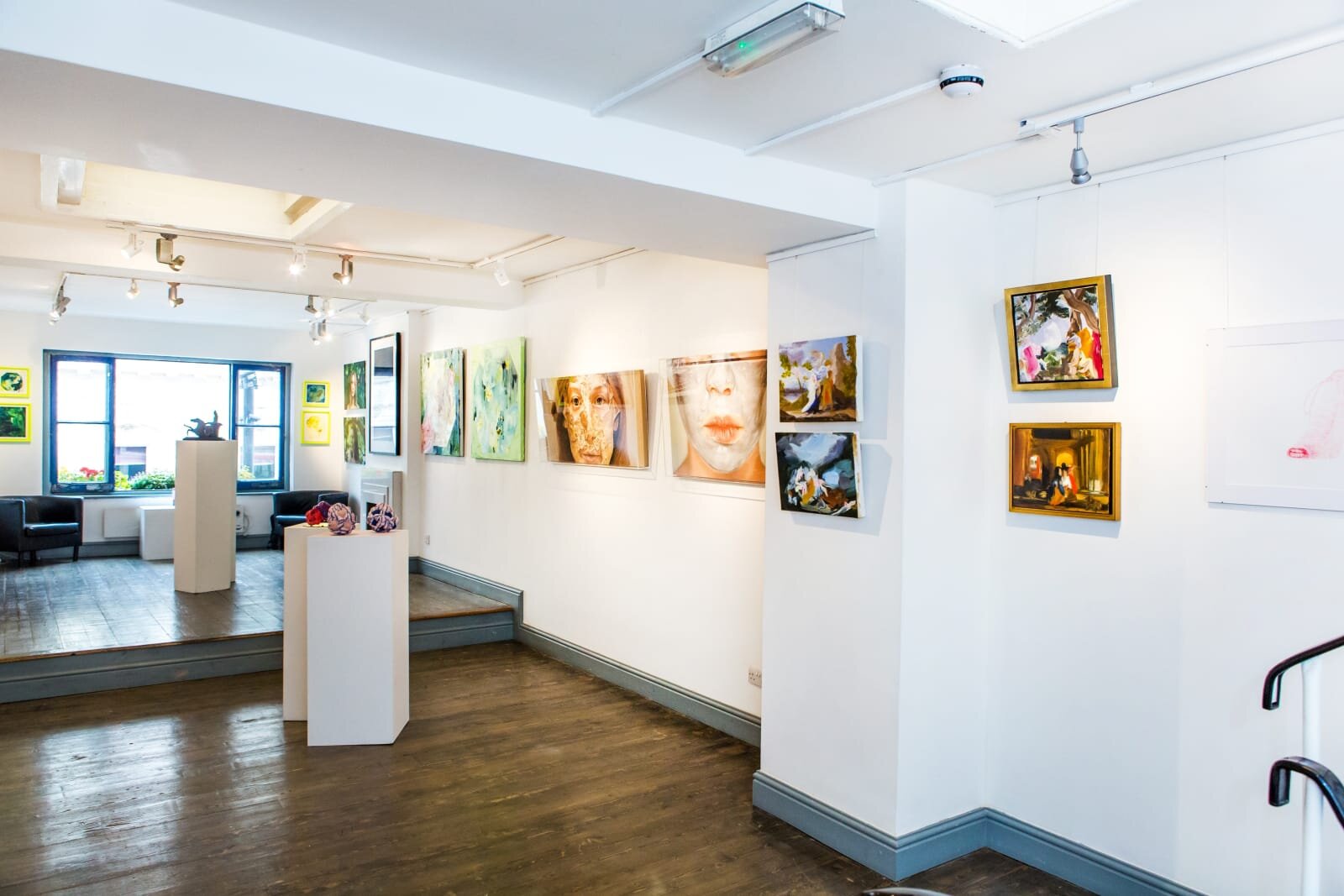
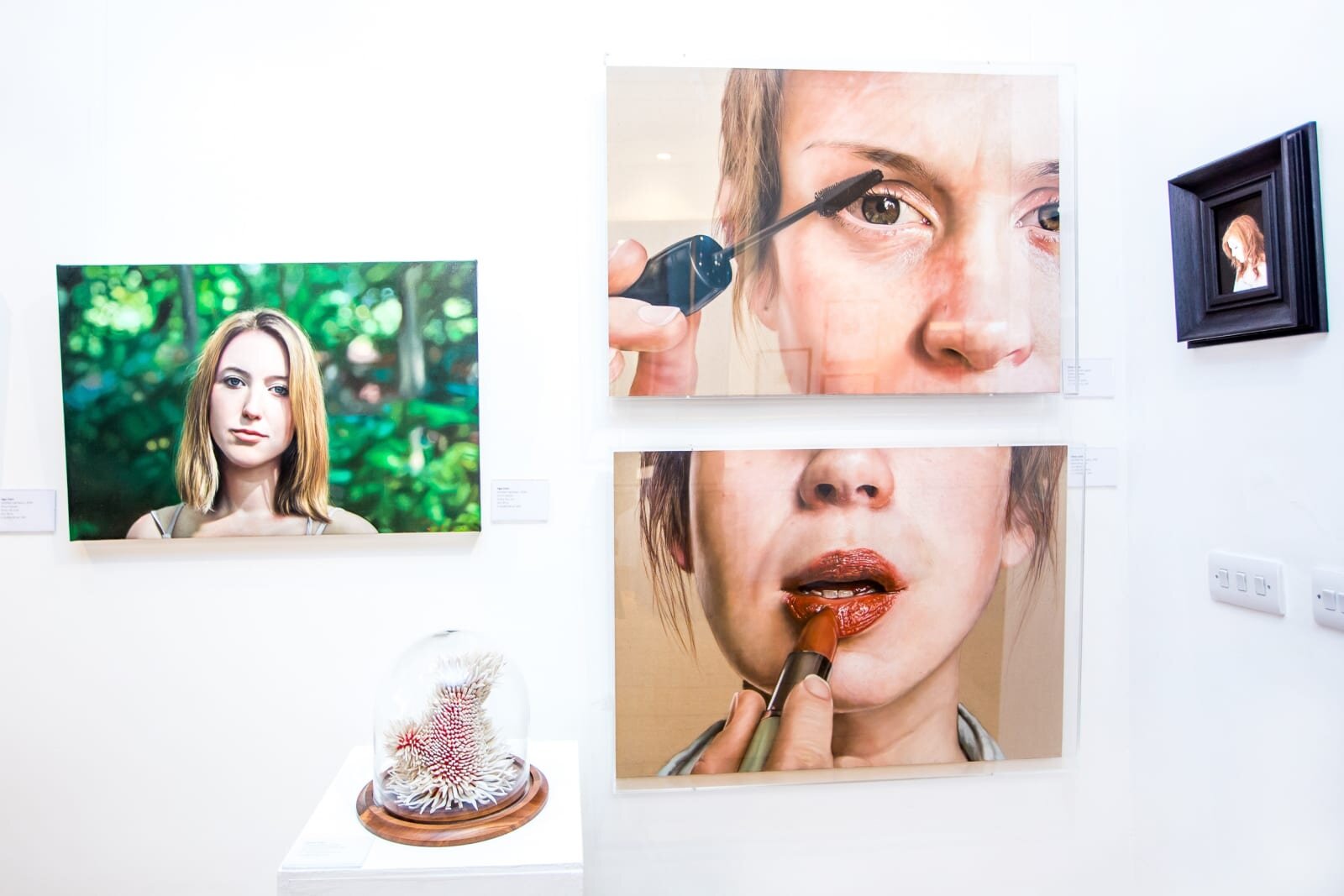
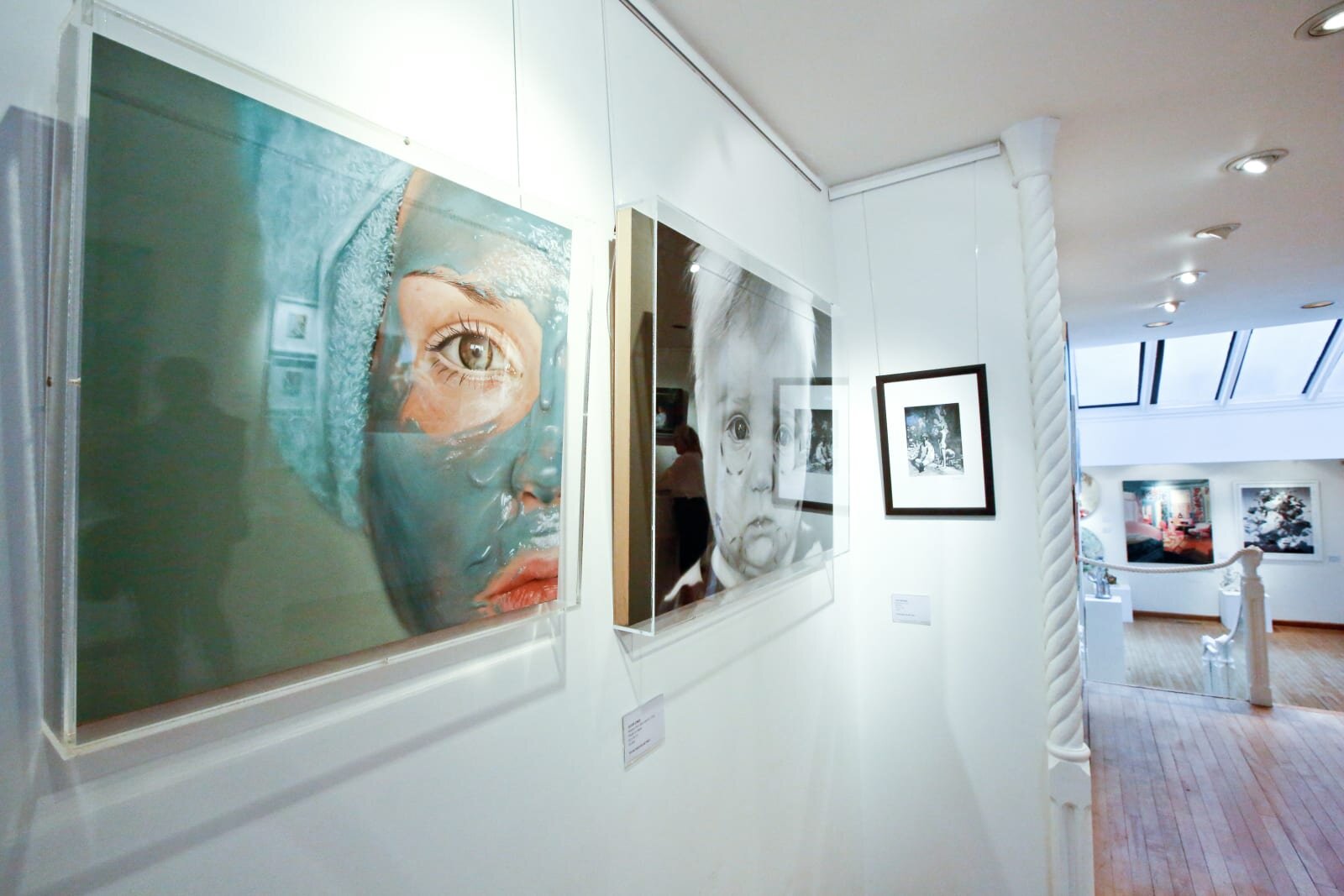
8) How has COVID-19 and the lockdown affected your day to day life and approach to creative work?
Thankfully, I am very fortunate to have studios where I live after having moved my studios out of Birmingham. I also managed to get hold of a lot of materials to make new stretchers etc just before the country was locked down which has meant that I have been able to work pretty well un-interrupted.
It is not without its setbacks however, for instance, being able to access artist Models. I have had a number of commissioned works requested over this period all of which would ordinarily require me to advertise for models, sift through hundreds of individual’s profiles to find someone suitable and then upon selecting the appropriate candidate organising a photoshoot to provide the reference material for the drawing, which has obviously not been possible. Improvisation has been successful so far although I shall have to wait until models are available for certain things.
It also had a rather major impact on a solo exhibition that I had put together in collaboration with Meadow Arts and the National Trust. ‘Skin Deep’ was due to open a few days before lock down although, rightly, the decision was made to postpone the opening and the running of the show until a later date. The country then closed down as did the venue, indefinitely – so it is quite strange to think that there is a whole show hanging in Berrington Hall, a very grand and ornate Georgian property in Herefordshire, that is only being viewed by the spiders!
What has been amazing during this period is to observe the global artist community/ art world take to the internet, whether that has been digital/virtual exhibitions, artistic initiatives, artist interviews and videos etc. I have watched a lot of live interactions and conversations with artists, gallerists, curators and collectors. It has quite obviously sparked a new era for the art world, one that so many are fighting to be at the forefront and many slightly unsure of the best way to navigate it.
Undoubtedly the best thing that has arrived during this period personally has been communicating with other artists, far more so than I would have done ordinarily; hearing how one another have been getting on and discussing work and ideas - It is something I really hope carries on as we come out into a new normal.



